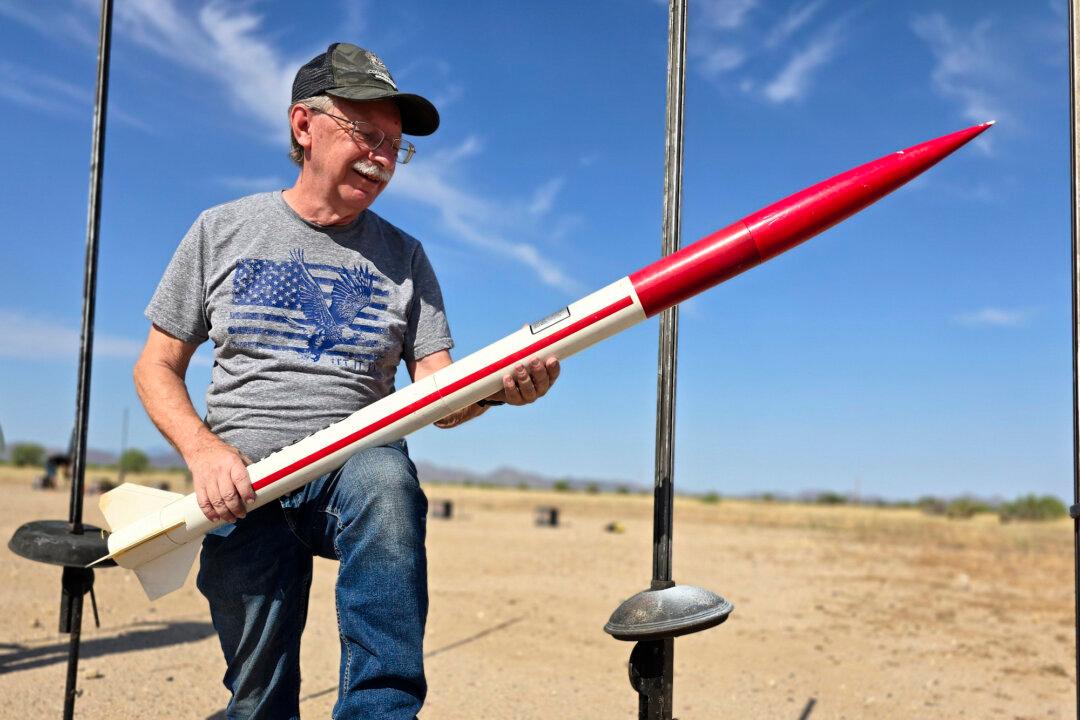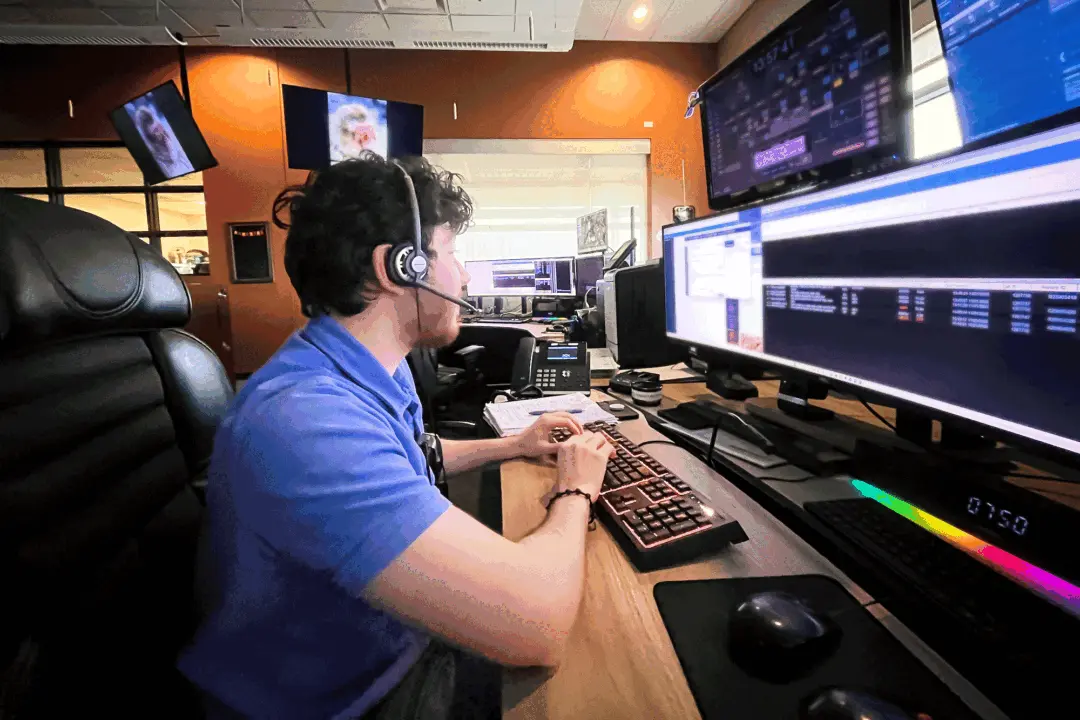MARANA, Ariz.—The sky was a magnificent blue and spectator anticipation was high as Jeff Black prepared to launch his high-powered model rocket in the Arizona desert.
Even from a safe distance, the rocket looked like a giant matchstick—a red nose cone with a white body tube and black stabilizer fins. Then, a split second after the final countdown—whoosh! There was lift-off.





